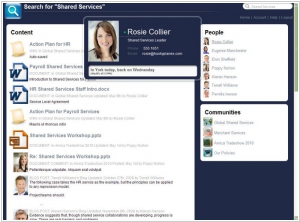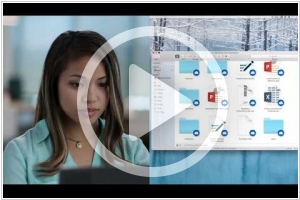Box vs OpenText
August 26, 2023 | Author: Michael Stromann
Box and OpenText are both enterprise content management platforms, but they have distinct differences:
1. Focus and Offering: Box is known for its cloud-based content collaboration and file sharing capabilities. It emphasizes user-friendly interfaces, ease of use, and seamless collaboration among teams. OpenText, on the other hand, provides a broader range of content management solutions, including document management, records management, workflow automation, and compliance. It caters to organizations with complex information management needs.
2. Deployment Options: Box is primarily cloud-based, offering a Software-as-a-Service (SaaS) model that allows users to access their files and collaborate from anywhere. OpenText offers both cloud-based and on-premises deployment options, giving organizations flexibility in choosing the environment that suits their specific requirements.
3. Integration Capabilities: Box provides extensive integrations with various third-party applications, making it easy to connect with popular productivity tools and extend its functionality. OpenText offers integration with a wide range of enterprise systems, such as customer relationship management (CRM), enterprise resource planning (ERP), and human resources (HR) systems, enabling seamless data exchange and interoperability.
4. Target Audience and Use Cases: Box primarily targets small and medium-sized businesses (SMBs) and enterprises that require simple, collaborative file sharing and content management solutions. It excels in industries such as technology, media, and professional services. OpenText, on the other hand, focuses on larger organizations with complex content management needs, such as highly regulated industries, government agencies, and enterprises with extensive compliance requirements.
5. Scalability and Customization: Box is designed to be highly scalable, enabling organizations to start with a small user base and expand as needed. It offers a range of plans to accommodate different business sizes. OpenText provides robust scalability and customization options, allowing organizations to adapt the platform to their specific workflows and requirements.
See also: Top 10 ECM software
1. Focus and Offering: Box is known for its cloud-based content collaboration and file sharing capabilities. It emphasizes user-friendly interfaces, ease of use, and seamless collaboration among teams. OpenText, on the other hand, provides a broader range of content management solutions, including document management, records management, workflow automation, and compliance. It caters to organizations with complex information management needs.
2. Deployment Options: Box is primarily cloud-based, offering a Software-as-a-Service (SaaS) model that allows users to access their files and collaborate from anywhere. OpenText offers both cloud-based and on-premises deployment options, giving organizations flexibility in choosing the environment that suits their specific requirements.
3. Integration Capabilities: Box provides extensive integrations with various third-party applications, making it easy to connect with popular productivity tools and extend its functionality. OpenText offers integration with a wide range of enterprise systems, such as customer relationship management (CRM), enterprise resource planning (ERP), and human resources (HR) systems, enabling seamless data exchange and interoperability.
4. Target Audience and Use Cases: Box primarily targets small and medium-sized businesses (SMBs) and enterprises that require simple, collaborative file sharing and content management solutions. It excels in industries such as technology, media, and professional services. OpenText, on the other hand, focuses on larger organizations with complex content management needs, such as highly regulated industries, government agencies, and enterprises with extensive compliance requirements.
5. Scalability and Customization: Box is designed to be highly scalable, enabling organizations to start with a small user base and expand as needed. It offers a range of plans to accommodate different business sizes. OpenText provides robust scalability and customization options, allowing organizations to adapt the platform to their specific workflows and requirements.
See also: Top 10 ECM software
Box vs OpenText in our news:
2023. Box announces Hubs, a custom portal to share specialized content
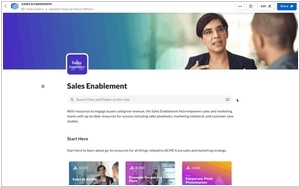
Box has introduced Hubs, a novel tool tailored for crafting centralized microsites to share specific types of content. Essentially, Box Hubs enables users to curate content from their Box account and disseminate it to their chosen audience in a customized and curated manner within their business. The potential applications for this tool are virtually limitless. It manifests as a specialized portal intended to house items such as HR policies, brand assets, or the most recent pricing details for a sales team. In conventional files and folders, these scenarios might lose their clarity, but within a portal, their purpose remains evident. The hub format offers a meticulously curated set of information for easy searchability—a concept that Box co-founder Levie acknowledges was not fully explored until the emergence of ChatGPT last year.
2022. OpenText acquires Micro Focus for $6B
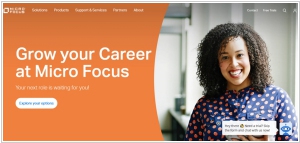
ECM giant OpenText is acquiring Micro Focus for a total value of $6 billion. Micro Focus, a British company, has primarily expanded its business by purchasing legacy software companies such as Borland, Novell, and Cobol-IT. One of its most prominent agreements was a $8.8 billion partnership with HPE in 2016, focusing on a part of HPE's enterprise software portfolio, including the well-known Autonomy deal. While OpenText's content management roots do not directly align with most of Micro Focus' offerings, this acquisition seems to be driven by the desire to grow and expand rather than pursuing immediate synergy with the acquiring company.
2021. Box acquires eSignature startup SignRequest for new content workflows
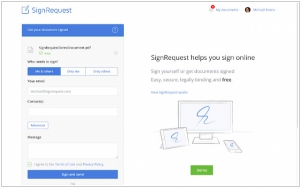
Box has announced its acquisition of SignRequest, an e-signature startup, for a sum of $55 million. This strategic acquisition fills a crucial gap in Box's offerings, providing the company with a native signature component that was previously absent from its platform. By incorporating SignRequest's technology, Box gains the ability to offer seamless e-signature capabilities directly within its platform, enabling new workflows and enhancing user experiences. The importance of remote work has become increasingly evident, particularly during the pandemic, as it offers enhanced safety and flexibility. Even in a post-pandemic world with a return to more face-to-face interactions, the ability to perform tasks entirely in the cloud and eliminate paper-based workflows will significantly accelerate processes and enhance overall efficiency.
2020. Box adds new collaboration capabilities
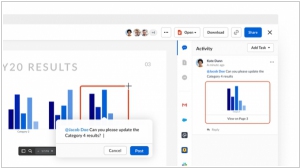
In response to the ongoing pandemic, Box is introducing new collaboration features. One of the key updates includes a cleaner interface, enhancing user interactions and file sharing capabilities. Additionally, Box is introducing a feature called Collections, which empowers users to organize their files and folders in a manner that suits their specific needs. This organizational structure is customizable on an individual basis. Furthermore, Box is incorporating an annotations capability, enabling users to easily add comments to files, either as a single editor or in a group discussion. Similar to collaboration tools in Google Docs, this functionality facilitates remote real-time commenting on any document, which is particularly valuable in the current environment. Lastly, Box allows external partners and customers to share files via a dedicated landing page, enhancing collaboration and information exchange.
2020. Box adds automated malware detection to Box Shield security product
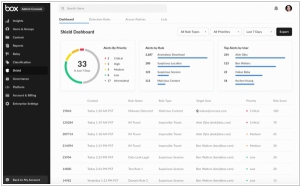
Box has introduced automated malware detection tools to enhance Box Shield, its security offering unveiled in the previous year. The company is employing a three-fold strategy with this solution. Firstly, users will be able to preview files without the need to download them, while receiving indications of any associated risks. Secondly, the system will proactively block the downloading of files that contain malware. Lastly, the security team will be promptly notified when a malware-infected file is uploaded to Box.
2018. Box acquired workflow automation startup Progressly
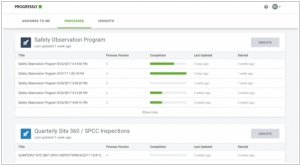
Box has recently acquired Progressly, a startup specializing in workflow management. In 2016, Box introduced its own workflow tool called Box Relay, in collaboration with IBM, targeting large enterprises. While Box Relay has proven valuable for well-defined processes within companies, such as contract management or employee onboarding, Box aims to expand its capabilities and create a wider range of workflows. The addition of the Progressly team to Box's workforce will facilitate this expansion. With their expertise, Box will be able to develop workflows that not only operate within the Box platform but also integrate with external workflow engines like Pega and Nintex. This integration will enable the creation of more complex automation scenarios using the comprehensive suite of Box tools and services. Such workflows can involve both internal employees and external organizations, allowing for sophisticated content movement and management beyond the capabilities of Box Relay.
2017. Box applied AI to content management
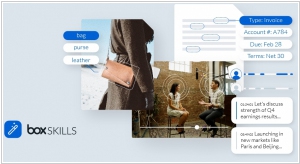
Box has recently introduced Skills and its accompanying SDK, known as Skills Kit. These new offerings empower organizations and developers to extract valuable insights from their extensive content repositories within Box datasets, utilizing machine learning techniques to unlock the inherent commercial value of their content. Box is currently showcasing three initial Box Skills, leveraging machine learning tools from Google Cloud and Microsoft Azure to address common business use cases. These include image recognition, which involves detecting objects and concepts within image files, performing optical character recognition (OCR) to extract text, and automatically assigning keyword labels to images for efficient metadata creation. Additionally, Box Skills encompass audio transcription and analysis, enabling the creation and indexing of text transcripts from audio files for seamless search and manipulation across various use cases. Lastly, video indexing employs text transcription, topic detection and indexing, and facial recognition to analyze video files comprehensively.
2017. OpenText acquired forensic security vendor Guidance Software
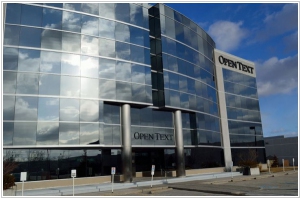
Forensic security and eDiscovery vendor Guidance Software has been acquired by content management company OpenText in a deal worth $240 million. OpenText has demonstrated a willingness to invest in strategic acquisitions to fill gaps in its portfolio, even if it means acquiring companies with overlapping functionality. A notable example is its acquisition of Documentum, an alternative enterprise content management firm, from EMC for $1.62 billion approximately a year ago. While this acquisition may introduce some overlapping functionality, it also grants OpenText access to new forensic tools—a domain previously unexplored by the company. According to Cheryl McKinnon, an analyst at Forrester Research specializing in the content management industry, this move expands OpenText's capabilities and expertise in forensics.
2017. Box introduced Box Elements - pre-packaged content services for developers
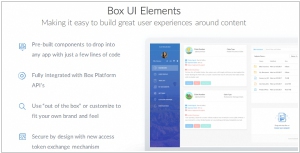
Box has unveiled a new developer tool called Box Elements, consisting of pre-packaged application components aimed at providing Box functionality through minimal lines of code. Over time, Box intends to offer three categories of Elements: UI, app, and services. The initial release focuses on the UI components, encompassing various functionalities. These include Content Uploader, which facilitates drag and drop file capability within any application; Content Explorer, allowing developers to embed Box file navigation into their applications; Content Preview, enabling the display of over 120 file types, including interactive video, within an application; and Content Picker, which empowers developers to integrate file picking capability within an application. While these capabilities may not appear groundbreaking, developing them from scratch would consume considerable development time. Box's offering allows for swift implementation without the need for extensive content expertise, enabling developers to expedite their projects.
2017. Box introduced desktop app Box Drive
Box has introduced Box Drive, a desktop application compatible with both Windows and macOS operating systems. This application enables users to create, edit, locate, and share files without the need for a web browser. By seamlessly integrating with the desktop environment, Box Drive functions as an additional drive on the computer, similar to the local C drive, providing a more streamlined and intuitive file management experience. While the application itself is free, large enterprises such as General Electric, P&G, and The Gap have the option to subscribe to Box for enhanced functionality. Existing customers will have access to the full range of capabilities offered by Box Drive. Notably, Box recently announced its integration with Apple's new Files app, which offers an additional avenue for accessing Box documents across iOS devices.


